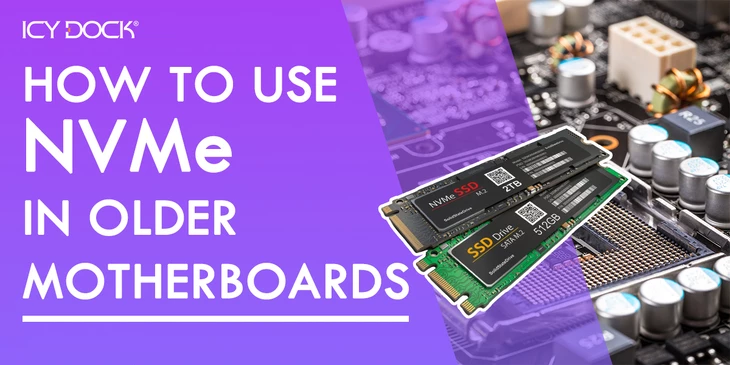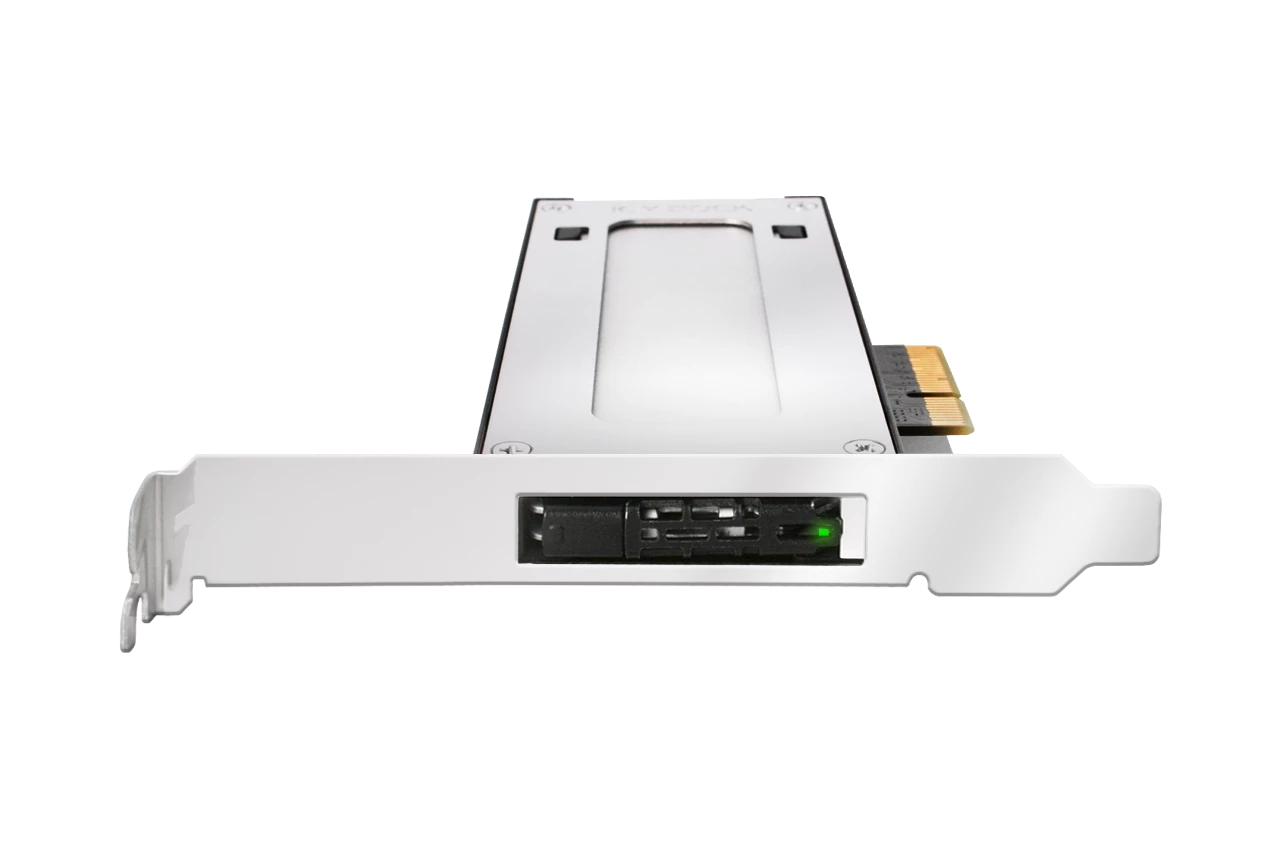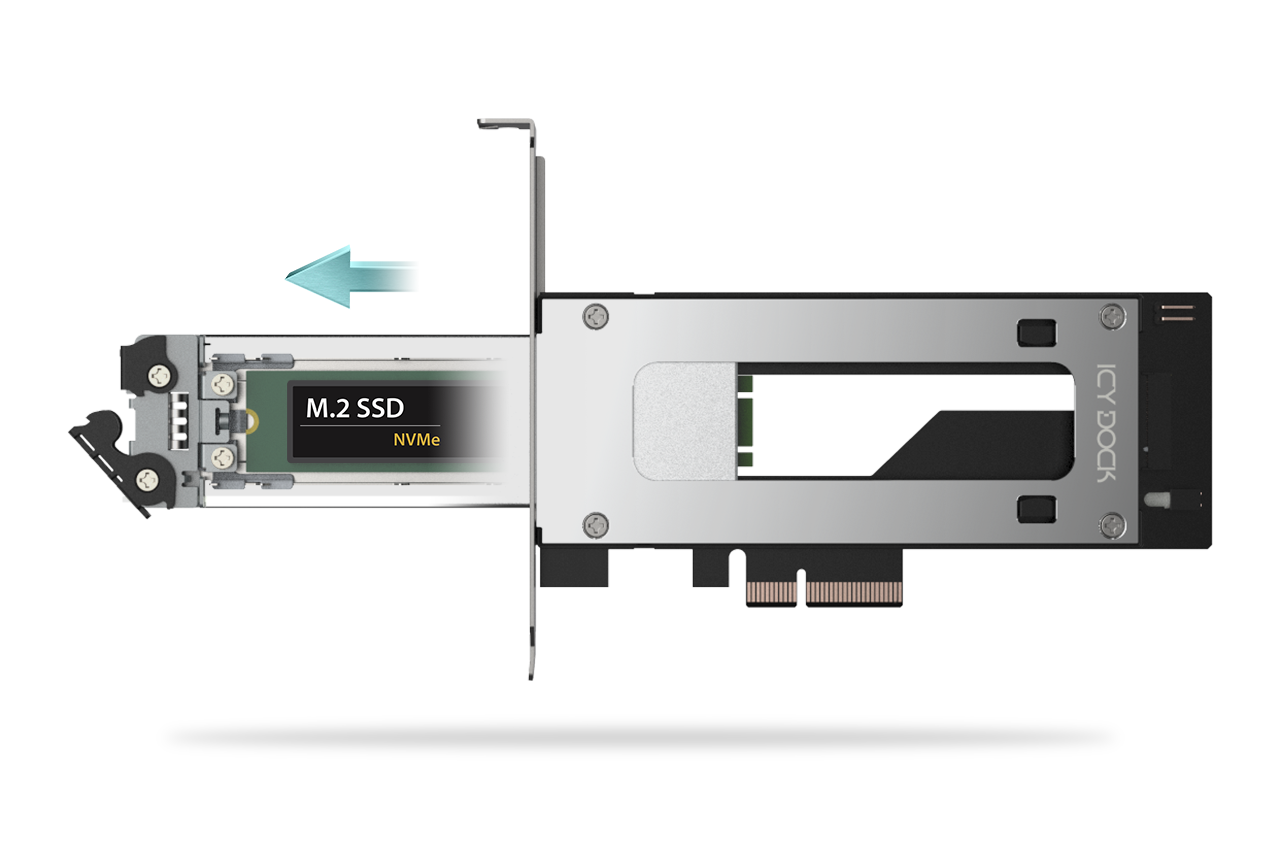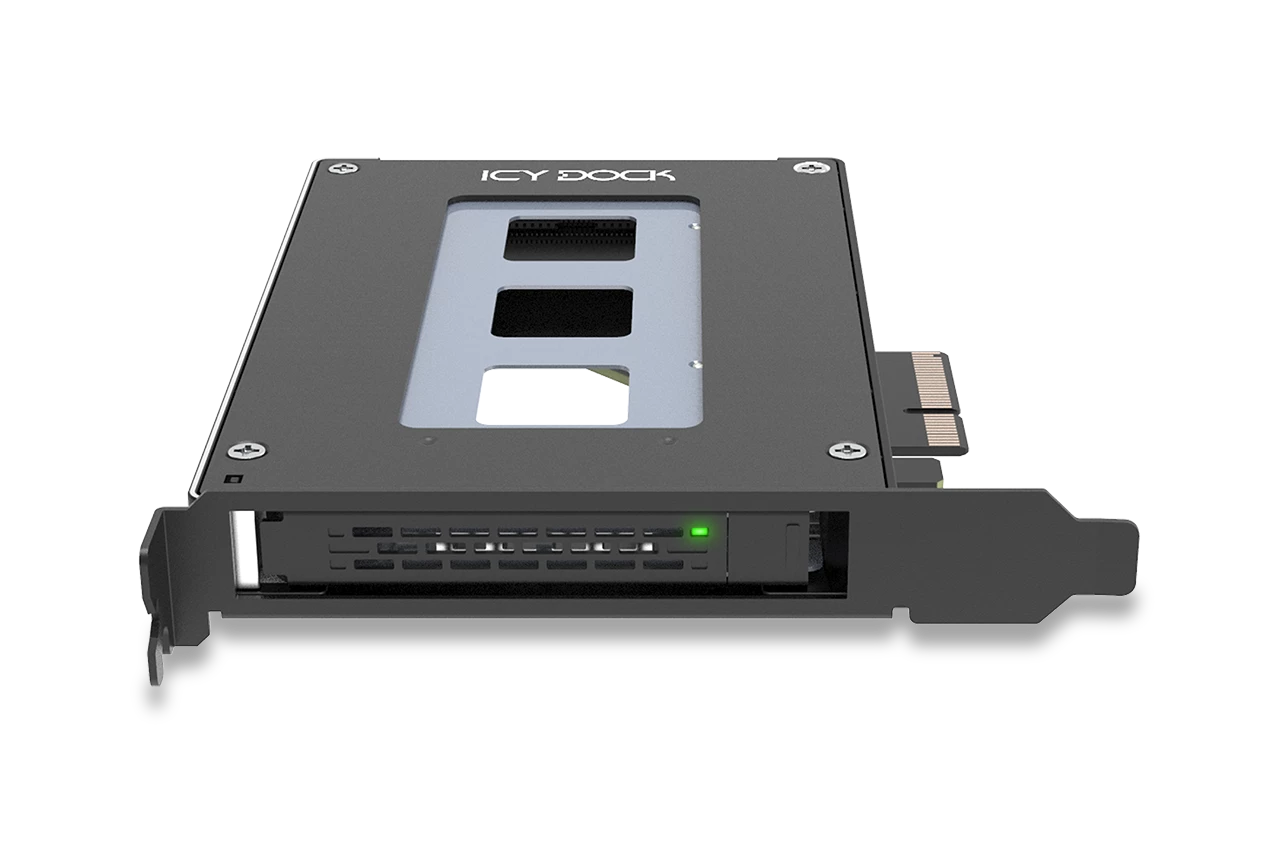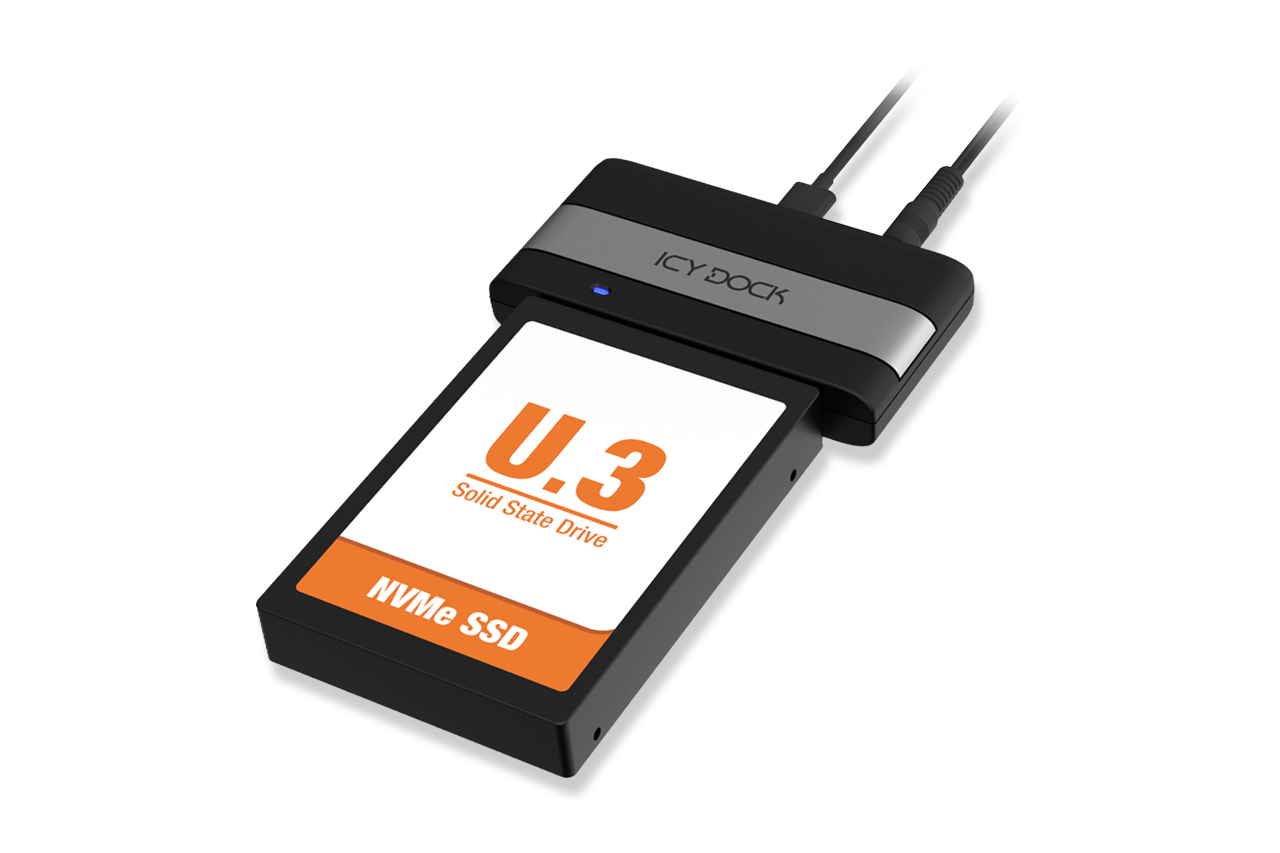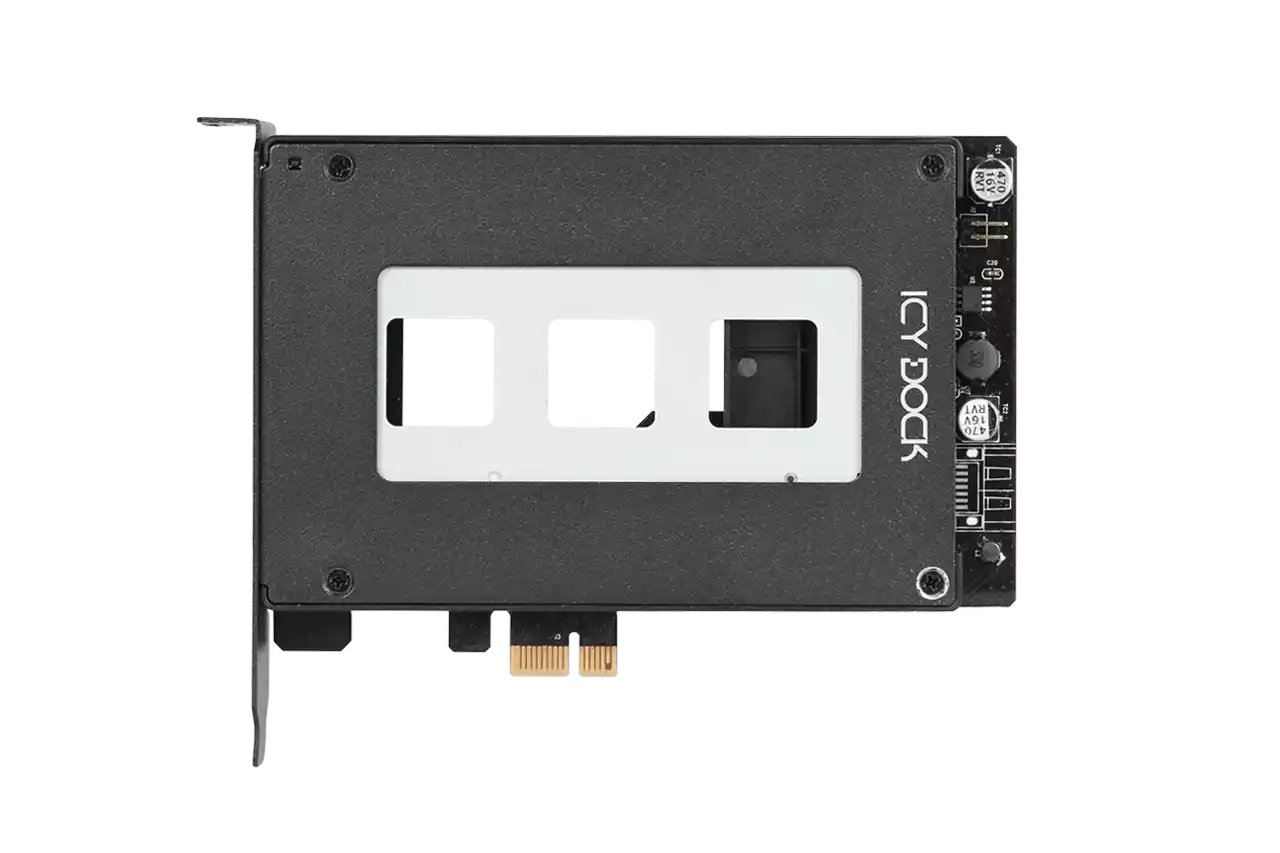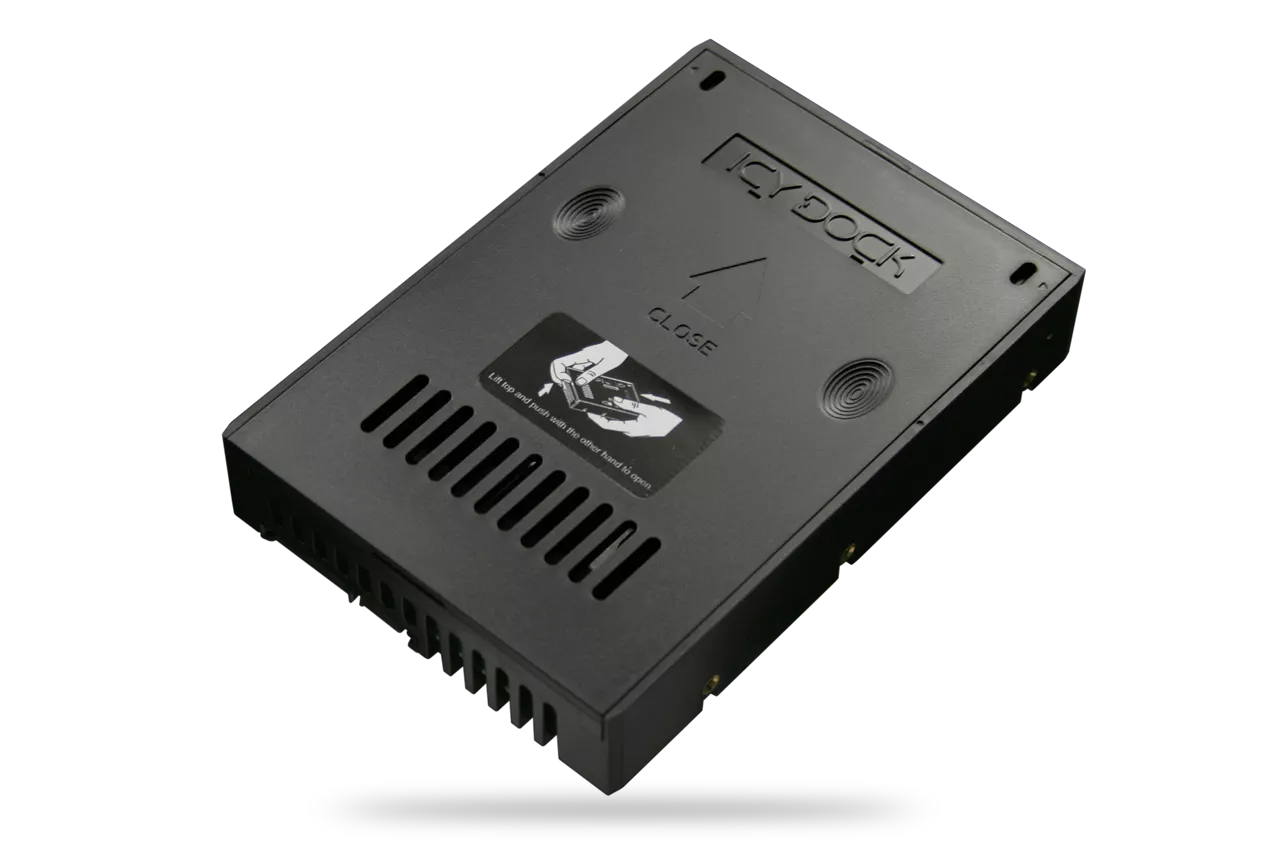|
|
|
How to use NVMe in older motherboards |
|
Using M.2 & U.2 NVMe SSDs (Solid State Drives) in older motherboards can be challenging because older motherboards typically lack native support for NVMe technology. NVMe (Non-Volatile Memory Express) drives uses the PCIe protocol, allowing the usage of higher speed drives that exceed SATA. If your motherboard doesn't have native NVMe drive support, you may still be able to use a NVMe drive with some workarounds. |
|
Here are a few methods to use NVMe drives in older motherboards: |
 |
|
Check for BIOS/UEFI Updates: Before attempting any workarounds, check if your motherboard has a BIOS/UEFI update available. Manufacturers occasionally release updates that add NVMe support to older motherboards. |
 |
|
NVMe PCIe Adapter Card: Purchase a PCIe x4 adapter card that allows you to install an NVMe drive in a PCIe slot on your motherboard. These cards would either have a M.2 slot for a M.2 NVMe drive or a connector that would allow you to connect a U.2 drive to the card with a cable, while using a PCIe card slot. |
 |
|
BIOS/UEFI Modding: This option is more advanced and carries risks. Some enthusiasts have successfully modified the BIOS/UEFI firmware to add NVMe support. This process is highly motherboard-specific and requires expertise. Modifying the firmware incorrectly can lead to a non-functional motherboard. |
 |
|
USB Connection: A workaround to using a PCIe NVMe drive on a system that is restrictive on PCIe connections is using a USB device. You would not be able to utilize the full speed of the drive due to the USB connection, but it is possible to have a connection that is at least as fast as a SATA SSD, depending on the USB connection. |
 |
|
Consider a SATA SSD: If all else fails, you may consider using a SATA SSD instead of an NVMe drive. SATA SSDs are still significantly faster than traditional hard drives and may be a reasonable compromise for older systems. |
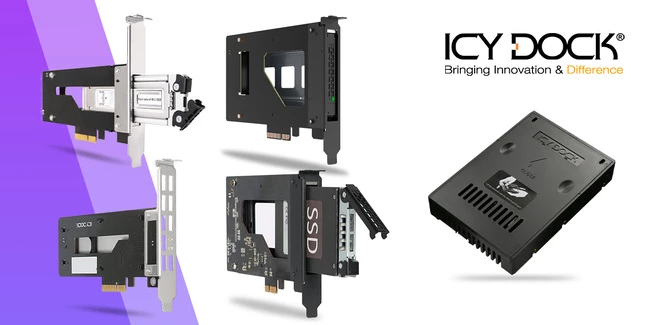 |
|
Below you can find more information about our ICY DOCK NVMe SSD solutions or Ask an Expert to help you choose the right enclosure for your applications and workloads. |
|
M.2 NVMe SSD |
|||||||||||||||||||||||||||||||||||||||||||||||||
|
|||||||||||||||||||||||||||||||||||||||||||||||||
|
|||||||||||||||||||||||||||||||||||||||||||||||||
|
|||||||||||||||||||||||||||||||||||||||||||||||||
|
U.2 NVMe SSD |
|||||||||||||||||||||||||||||||||||||||||||||||||
|
|||||||||||||||||||||||||||||||||||||||||||||||||
|
|||||||||||||||||||||||||||||||||||||||||||||||||
|
SATA SSD |
|||||||||||||||||||||||||||||||||||||||||||||||||
|
|||||||||||||||||||||||||||||||||||||||||||||||||
|
|||||||||||||||||||||||||||||||||||||||||||||||||
















